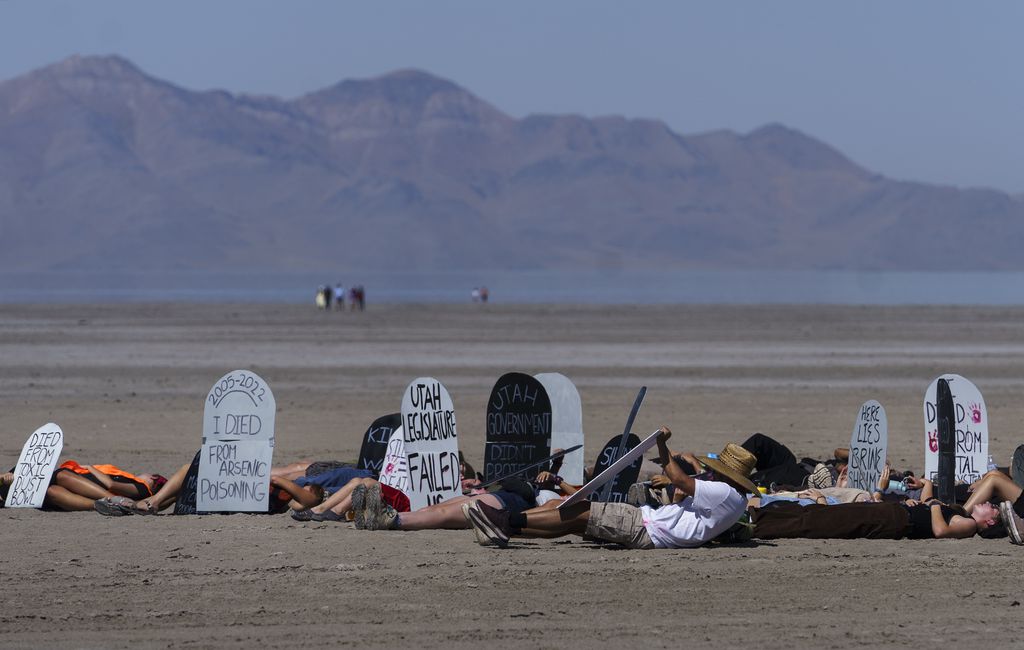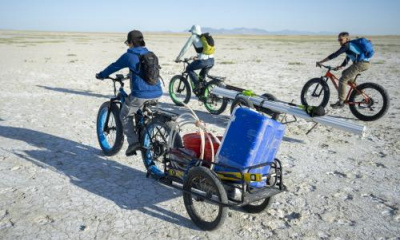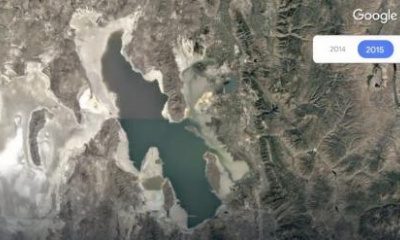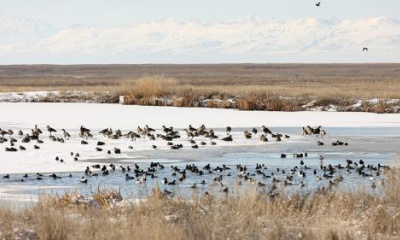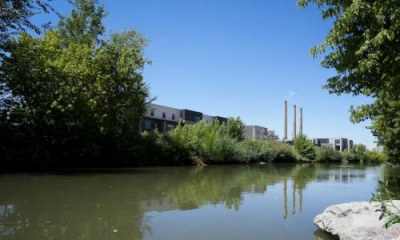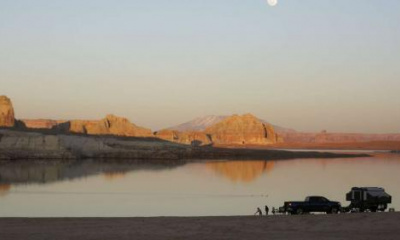Despite persistent bugs, unseasonable heat and the formidable challenge presented by a lake that has been receding most of their lives, students gathered Saturday to raise awareness about the Great Salt Lake’s plight.
The assembly of around 100 youths and their supporters sang and read poetry about Utah’s charismatic terminal lake, which hit another record low elevation this year and continues to shrink. They gave stirring speeches about climate change, polluting industries and a lack of action from their elected leaders. They walked in a somber procession along the lake’s vast exposed bed near its southern shore. They lay at the base of a cardboard graveyard made to mourn the Great Salt Lake, which sits at the brink of collapse.
“I died from arsenic poisoning,” read one mock tombstone.
“Utah values alfalfa over my life,” read another.
“Utah government didn’t protect me,” read another.
Utah Youth Environmental Solutions Network, or UYES, organized the “die-in” event. The volunteer group was formed by some of the same students who managed to get Utah’s conservative Legislature to acknowledge the existence of climate change and its looming danger in 2018.
“Honestly, I have kind of always been freaked out since I was little [about] what’s happening to our planet,” said Natalie Roberts, a sophomore at West High School. “What’s happening to our future?”
Roberts joined UYES this summer. The team camped overnight on Antelope Island, observing how much the Great Salt Lake’s water has receded and the impacts it is having on the bugs, brine shrimp and birds the lake supports.
“Especially with the situation at the Great Salt Lake,” Roberts said, “the science is so clear, everything is so clear, and it’s pointing [to] an environmental nuclear bomb.”
She referenced recent reporting by The New York Times that spells out the toxic air pollution and quality of life issues the Wasatch Front faces as the lake shrinks. She said it helped her better understand the dire situation.
“I’ve always known about the water crisis we’ve been having down here,” Roberts continued, “but I really didn’t understand the urgency.”
Perhaps motivated by the Great Salt Lake hitting a record low two years in a row, Utah lawmakers passed a slew of water-related bills in their latest general session. But to many of the students at Saturday’s funeral for the lake, policymakers are not doing enough to meet the moment.
“They’re kind of just allowing large corporations to use the Great Salt Lake as their dumping ground,” said 16-year-old Sheyda Allen, who helped organize the event. “And not only that, obviously the inflows to the Great Salt Lake are just being completely drained by farming and agriculture, and because of our reckless laws surrounding water rights.”
Muskan Walia, a 20-year-old student at the University of Utah, shared a eulogy for the lake. She compared the lake’s desiccation to the quelling of minorities and historically marginalized groups.
They “never really had a chance existing in a system that was built to work against them,” Walia said. “The Great Salt Lake never really had a chance.”
The Great Salt Lake sits at the bottom of a terminal basin. Its existence depends on whatever water cities, farmers, institutions and industries leave to flow downstream. But the Wasatch Front’s booming population and its reluctance to adopt conservation measures have put increasing pressure on water supplies. As a result, the lake has seen a long and steady rate of decline, which is further fueled by climate change.
“With so many arising problems, we all know there are just as many solutions,” Walia continued. “But greed, control and ignorance are keeping our voices for the Great Salt Lake smothered. If we do not raise awareness now and force our government, those in power, to pay attention to us, our youth, we will be paying the price.”

